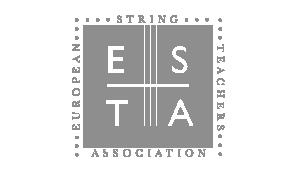Reflecting on 40 years of making music – whether in the basement of a Cornish fisherman’s cottage or in prestigious concert halls – it occurs to me that my teachers, my teachers’ teachers, the musicians who have touched me and, in turn, their teachers, all spring from one source: Pablo Casals. My yoga practice also returns to a single person, the Italian teacher Vanda Scaravelli. What attracts me to both figures is that they draw constantly on natural principles, such as breath, gravity and the wave. I have often thought how much they would have liked one another had they met.
A well-grounded body can become still, much in the way a bowl of water becomes still if undisturbed. This is quite different from becoming stiff like a brick wall. Both may be unmoving but only the bowl of water has the potential for movement.
Peter Blackaby, Intelligent Yoga (2012)
I had my first experience of yoga in 1995 in Peter Blackaby’s class in Brighton. Blackaby was a student of Mary Stewart, herself a student of Scaravelli. In that very first class I felt the wave of the breath moving my body, and that moment changed the course of my life. In 2010 I began the Breathing Bow project, coaching players suffering from tension and stage fright. While I enjoy collaborating with people from many disciplines, such as the Alexander technique, I always return to Scaravelli’s yoga, finding particular harmony in my work with Jane Fenton. A cellist who also trained as a yoga teacher with Blackaby, Jane continues to enlighten me on the connections I started to make then between yoga, playing an instrument and making music.
Here, Jane and I have taken the three elements breath, gravity and the wave and chosen three asanas (postures) with which to illustrate them. Because, as string players, our ‘working’ parts – arms, hands, shoulders – are so often constrained by layers of command and critique, it is helpful to feel the release first in the lower parts of the body such as the hips, legs and feet before bringing that experience to our upper body. The descriptions that follow are not instructions but rather guidelines for your own exploration. The asanas can, if felt from the inside out, be a powerful way to bring us into the present moment, where judgement ceases, we feel secure and connected, and performance is transformed as the body, mind and music become one.
BREATH
By tuning in to the subtle way in which the breath initiates movement, we tune in to the way the body wants to move, rather than telling it how we want it to move. Allowing the movement of our limbs to flow from that listening, we build trust in the body’s own intelligence, and a sense of peace supports even the fastest, most vigorous gesture.
One of the simplest sequences in which to feel the breath moving the body is in Apanasana. Quietening our minds and allowing the breath to lead the movement, this is a beautiful way to experience freedom in the hips and the lower back. By creating space in the belly on the exhalation, we can fold our legs effortlessly towards the chest, while on the inhalation they are guided gently away. There is no pushing or pulling, just responding to the breath. Having felt this release on the floor, we can then invite a similar response in the arms in standing. The ribcage fills with air and empties and the arms follow, floating away from and back towards the torso, and the shoulder, wrist and elbow joints become free. This in turn can lead to an experience of bowing which is more like the opening and closing of a bird’s wing than our habitual lifting and pressing.
APANASANA (sequence)
Lie on your back with your legs folded towards your chest just enough for you to drape your hands over your knees. Arms are straight but soft.
As you breathe out, allow the belly button to drop back towards the spine and let the arms gently guide the knees further in towards the chest, into the space you have created by the exhalation. As you breathe in, the belly fills with air and your knees naturally move away from the chest as your arms straighten again. The upper body remains quiet, shoulders released back, and neck free.
Continue the sequence until the movement and the breath are in harmony.
GRAVITY
Our arms are like wings. We have to learn how to use them. They become light, very light, when we are properly grounded.
Vanda Scaravelli, Awakening the Spine (2012)
From the feeling of our feet on the floor to our fingers on the instrument, we spend a surprising amount of effort opposing gravity. Sometimes the sheer weight of our arm inspires panic. We often compensate for wanting to be taller, shorter, heavier or lighter by overarching the back, hunching over or holding the belly in, while anxiety about being seen or heard can cause us to go into fight–flight–freeze response, creating blockages in the body. Abandoning ourselves to gravity is something that many of us have forgotten how to do, yet, happily, it is something we can practice.
In the standing ‘mountain pose’ Tadasana, we start by waking up the feet. We remind each part (each toe, the inside, the outside, the ball and the heel) of the importance of its role in receiving and transmitting weight into the ground through the bones. Only then, when each bone in the foot is taking full responsibility for its role in weight-bearing, can the muscles relax. We can translate this exact experience into our fingers, as they receive and transmit weight into the string through the bow.
PREPARATION FOR TADASANA
Waking up the toes
• Keeping the big and little toes down, try to lift the middle three toes.
• Lift all the toes and then try to place each toe down, one by one, starting with the little toe.
• With all the other toes down, try to lift the big toes and wave them from side to side like windscreen wipers
Now stand and feel the width and spread of your feet.
A sense of teamwork can be established similarly in the bow hand:
• Try to play whole passages with various combinations of fingers (first and fourth, middle two, second and fourth, first and third).
• Play a legato line, trying to change finger combinations as you go without interrupting the sound.
Now play with all the fingers on the bow and feel the ease as each one assumes its responsibility and cooperates with the others.
N.B. These exercises are not easy, but they do come with practice, and even trying them gives a completely different experience of weight- bearing to the feet and hands.
Circling around the line of gravity
With eyes closed, move the weight of the body in small, slow circles around the feet (first clockwise, then anticlockwise). As you become aware of the tension and release in the body required to shift your weight, you gently awaken the response to gravity through your feet.
If sitting to play, you can do the same exercise with the chair. First locate your sitting bones. (You can do this by putting a hand under each one until you feel the weight dropping into your fingers. Remove your hands and feel yourself drop even further into the chair.) Then move your weight around your sitting bones in circles, paying attention to the tension as it comes and goes in your back, thighs and stomach.
TADASANA
• Stand with feet parallel, hip-width apart. Spread the toes and drop down through the inner and outer edges of the feet. The knees are soft.
• Take a couple of deep breaths, with the inhalation travelling up the front of the body, and the exhalation dropping back down through the spine and into the heels.
• Float the pelvis over the feet as you give weight down through the bones.
• Let the belly relax back on the exhalation, releasing the tailbone and rooting the body from the waist down. The upper body is light and free.
• Float the shoulders over the hips, giving weight down through the arms. Sense the aliveness in the hands.
• Melt the jaw into the back of the head.
• Let the crown of the head blossom like a flower.
• Observe your breathing without interfering.
String players often experience more strain during long quiet passages than during loud ones because holding the full weight of the arm – on average 5.3 per cent of our body weight, about 7lb – away from the string with muscle strength is exhausting. If we work with rather than against the force of gravity, we need only reorganize the shape of the arm so that the weight falls either through the elbow towards the floor (playing quietly) or directly into the string (playing loudly).
The anti-force, born from gravity[…] is similar to the rebounding explosion of a waterfall which, after dropping down at high speed and springing up again with incredible strength, transforms and sublimates its journey by dissolving the water into ever lighter sprays, creating a swirling cloud.
Vanda Scaravelli, Awakening the Spine (2012)
Another advantage of working with gravity is that we immediately benefit from its anti-force or rebound. This is a huge bonus and provides us with constant rest and space while we play – technically, musically and mentally.
THE WAVE
posture 1.1 Zoology A particular pose adopted by a bird or other animal, interpreted as a signal of a specific pattern of behaviour.
Oxford English Dictionary
The word ‘posture’ often implies a relationship, and as a performer in relationship with an audience, one person might adopt a posture in order to hide, while another might do so to show off his skill or ‘interpretation’.
The ‘cat to cow’ sequence in yoga can be a powerful way to explore postures we adopt when we play as it takes us from flexion of the spine (‘cat’ – a closing of the body, often used to protect ourselves) to extension of the spine (‘cow’ – an opening of the body, often used to project ourselves). When the movement of the spine is led by the breath, we experience postures not as fixed affectations but rather shapes through which we continuously flow. On an emotional and spiritual level, we come to experience that flexion can embody not only closing, protection and fear, but also receiving, inner listening and inspiration, while extension can embody not only opening and projecting, but also giving, releasing and expression.
MARJARASANA
Using the wave of the breath to release the spine.
N.B. This sequence is often done using the exhalation to go into flexion and inhalation into extension. However, while the inhalation expands and lifts the ribcage, initiating the movement into extension, an exhalation at the end of extension, as I describe here, invites an even deeper opening for the body.
• Come on to hands and knees – shoulders over hands and hips over knees. Spine straight (held in a neutral position). Take a resting breath in.
• As you exhale, draw the belly back, curling the pelvis under, rounding the back and dropping the head. The spine is in flexion.
• As you give way to the in-breath the ribcage expands, and the body naturally opens and moves in the opposite direction. Soften the elbows and shoulders as you move into extension.
• By exhaling at this point, you can move further into extension as the wave of the breath moves up through the spine, releasing the area between the shoulder blades, completing the release by lifting the head. The lower spine is shortened, but should not be compressed, the extension being spread evenly through the spine.
• The next inhalation initiates the movement back to neutral and you repeat the sequence.
As we move from flexion to extension, as we move around our centre of gravity, as we breathe in and out with attention, we move through a still place which contains the potential for all movement, all sound. Like being poised at the top or bottom of a hill, or of the breath, or of a musical phrase, this is a place of regeneration whose silence and stillness nourishes us each time we return to it. It is a place of unity.
The word ‘yoga’ means to yoke together or unify. The practice of it is, in my experience, a key to that unity between mind, body and spirit – the composer, the audience and the music.
In music, in the sea, in a flower, in a leaf, in an act of kindness... I see what people call God in all these things.
Pablo Casals
Like Casals’s book, Joys and Sorrows, Scaravelli’s extraordinary Awakening the Spine has been a companion to me for many years. Turning to the biography page for the first time today, I discover that Scaravelli’s mother was a student of Artur Rubinstein, and that Vanda was herself an accomplished pianist. On the page facing her biography, instead of a portrait, I notice a photograph of a concert programme from 1934 in Florence. The musicians named as a trio are Alfred Cortot, Jacques Thibaud and Pablo Casals.
And so it turns out that Casals and Scaravelli did meet, not only at this performance but, apparently, on many occasions at impromptu concerts in the Scaravelli home in Florence. And I am sure, given how much they seem to share, that they liked one another a great deal.
Reflecting on 40 years of making music – whether in the basement of a Cornish fisherman’s cottage or in prestigious concert halls – it occurs to me that my teachers, my teachers’ teachers, the musicians who have touched me and, in turn, their teachers, all spring from one source: Pablo Casals. My yoga practice also returns to a single person, the Italian teacher Vanda Scaravelli. What attracts me to both figures is that they draw constantly on natural principles, such as breath, gravity and the wave. I have often thought how much they would have liked one another had they met.





